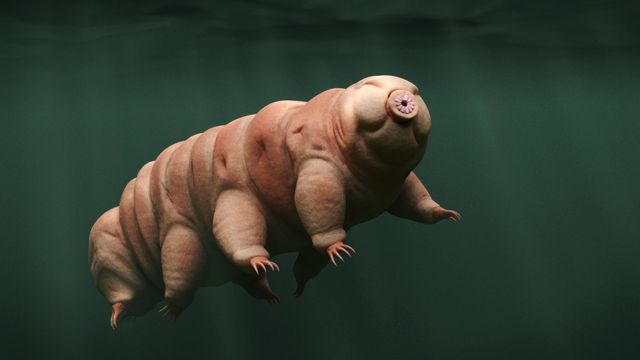Life on Earth is resilient, adaptable, and remarkably diverse, capable of thriving in some of the planet’s most extreme and inhospitable environments. From scorching deserts and acidic lakes to deep-sea vents and frozen tundras, extremophiles—organisms that thrive in extreme conditions—offer fascinating insights into the adaptability, resilience, and evolutionary ingenuity of life on our planet. In this article, we will embark on an exciting exploration of Earth’s extremophiles, delving into their unique adaptations, ecological roles, and the profound implications they hold for our understanding of life’s potential and the search for extraterrestrial life in the cosmos.
Introduction to Extremophiles
Extremophiles, derived from the Latin words for “extreme” and “lover,” are organisms capable of thriving in environments that are hostile to most life forms, challenging our conventional understanding of habitability and the limits of life on Earth.
- Diverse Habitats and Extreme Conditions: Extremophiles inhabit a wide range of extreme environments, including high temperatures, acidic or alkaline conditions, high salinity, low oxygen levels, and extreme pressure, reflecting the remarkable adaptability and resilience of life in diverse ecological niches.
- Evolutionary Adaptations: Extremophiles possess unique physiological, biochemical, and genetic adaptations that enable them to survive and thrive in their respective extreme habitats, providing valuable insights into the evolutionary mechanisms, metabolic pathways, and genetic resilience that underpin life’s adaptability and diversity.
Classification of Extremophiles
Extremophiles are classified into various categories based on the specific extreme conditions in which they thrive, offering a fascinating spectrum of adaptations and survival strategies.
- Thermophiles: Thriving in high-temperature environments, thermophiles, such as bacteria found in hot springs and hydrothermal vents, utilize heat-resistant enzymes and metabolic pathways adapted to extreme thermal conditions.
- Halophiles: Inhabiting high-salt environments, halophiles, including salt-loving microbes found in salt flats, salt lakes, and saline soils, have evolved mechanisms to maintain osmotic balance, tolerate high salinity, and utilize salt ions for metabolic processes.
- Acidophiles and Alkaliphiles: Acidophiles thrive in highly acidic environments, such as acid mine drainage and volcanic lakes, while alkaliphiles inhabit alkaline soda lakes and serpentinizing springs, showcasing diverse pH adaptations and metabolic strategies.
- Piezophiles and Barophiles: Deep-sea extremophiles, known as piezophiles or barophiles, thrive under high-pressure conditions, such as hydrothermal vents and deep-sea trenches, adapting to extreme pressures through structural, biochemical, and physiological adaptations.
Ecological Roles and Environmental Significance
Extremophiles play crucial roles in their respective ecosystems, contributing to nutrient cycling, ecosystem stability, and the biogeochemical processes that shape Earth’s diverse habitats.
- Biogeochemical Cycling: Extremophiles participate in essential biogeochemical cycles, including carbon, nitrogen, sulfur, and metal cycling, through specialized metabolic pathways, enzymatic reactions, and microbial interactions that drive ecosystem dynamics and nutrient recycling.
- Extremozymes and Biotechnological Applications: Extremophiles produce unique enzymes, known as extremozymes, with potential applications in biotechnology, industrial processes, biofuel production, and pharmaceutical research, highlighting their economic and scientific importance.
Implications for Astrobiology and the Search for Extraterrestrial Life
The study of extremophiles has profound implications for astrobiology, the scientific study of life in the universe, and the search for extraterrestrial life on other planets, moons, and celestial bodies.
- Habitability and Life Beyond Earth: Extremophiles challenge traditional definitions of habitability, expanding the range of potential environments where life could exist beyond Earth, including Mars, Europa, Enceladus, and exoplanets within and beyond our solar system.
- Biosignatures and Life Detection: Understanding extremophiles’ adaptations, metabolic processes, and survival strategies informs the search for biosignatures, molecular markers, and potential life detection techniques that could identify signs of life in extraterrestrial environments.
Conclusion
Earth’s extremophiles, these resilient and remarkable organisms that defy the conventional boundaries of life, offer profound insights into the adaptability, diversity, and evolutionary potential of life on our planet and beyond.
As we continue to explore, study, and marvel at the wonders of extremophiles in Earth’s most extreme environments, we are reminded of the resilience of life, the boundless possibilities of adaptation, and the timeless quest for discovery, understanding, and exploration that drives us to explore the mysteries of life’s origins, evolution, and potential in the vast, diverse, and awe-inspiring cosmos that beckons us to explore, contemplate, and embrace the profound mysteries, beauty, and complexity of life in all its forms, adaptations, and expressions that thrive in the harshest, most extreme, and unexpected corners of our magnificent blue planet and the boundless universe beyond.
Read More: The Fermi Bubbles: Giant Structures at the Center of the Milky Way
